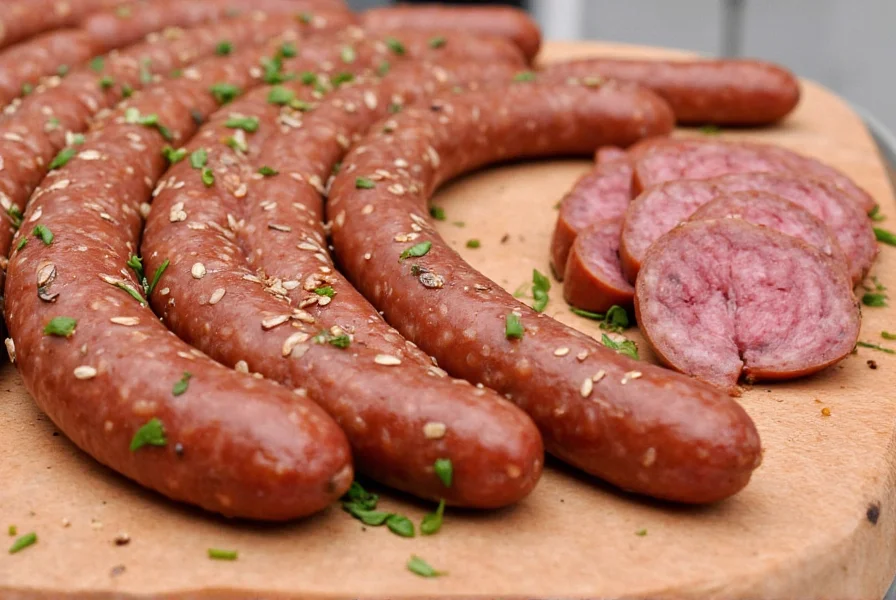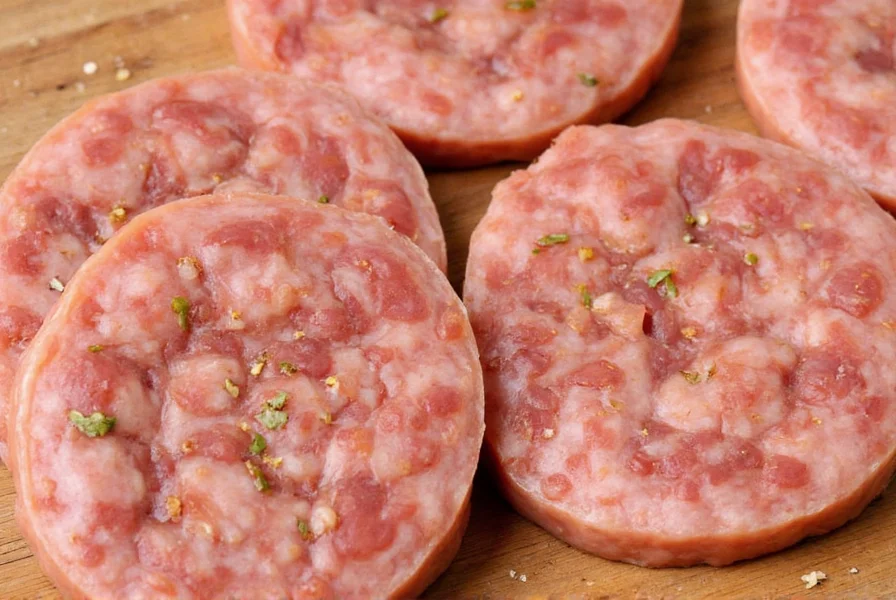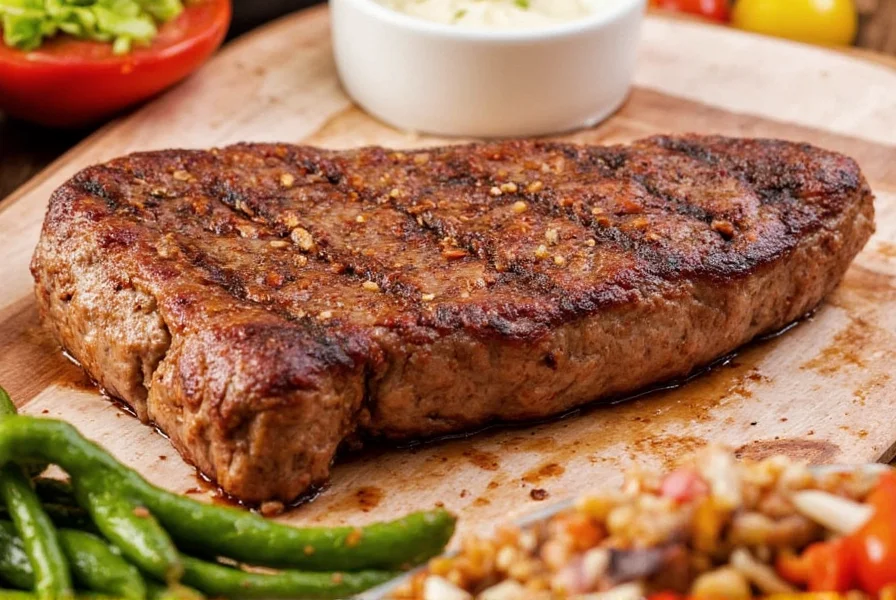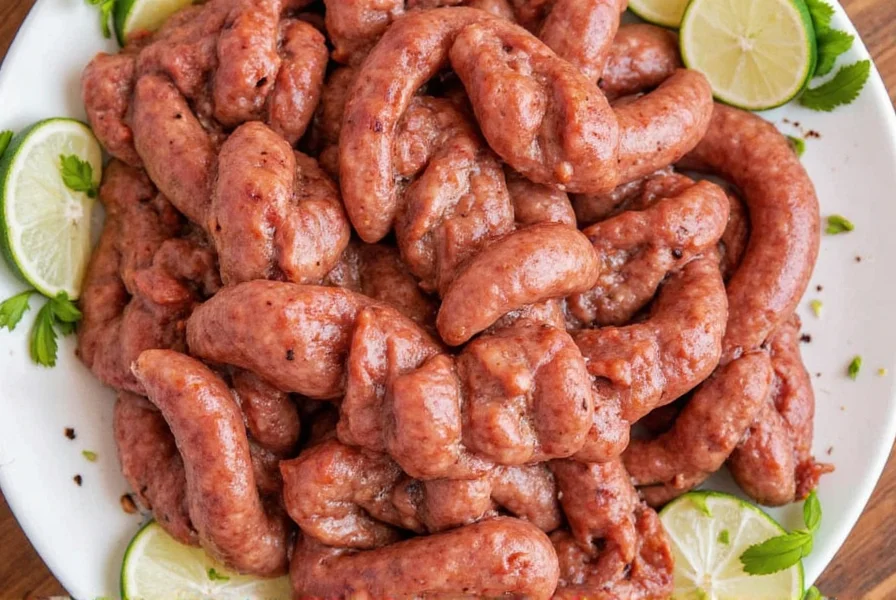Table of Contents
Introduction to Seasoning in Sausage
Seasoning is the core of exceptional sausage making. Properly balanced spices transform ordinary meat into flavorful, aromatic sausages that stand out. This guide covers essential spices, precise measurement techniques, and professional blending methods to help you achieve restaurant-quality results at home.

Why Seasoning Matters in Sausage
Sausage seasoning isn't just about adding flavor—it's a scientific process that affects texture, preservation, and overall eating experience. The right blend enhances meat's natural taste, balances fat richness, and creates harmonious flavor profiles. Without proper seasoning, even premium meat becomes bland and unremarkable.
Professional sausage makers follow precise spice ratios based on meat weight, considering factors like moisture content, fat percentage, and desired flavor intensity. This ensures consistent results batch after batch.

Common Seasonings Used in Sausage
While hundreds of spice combinations exist, these seven foundational ingredients form the basis of most sausage recipes. Each serves a specific purpose in flavor development and meat chemistry:
- Salt (1-2% of meat weight): The essential foundation. Enhances all other flavors, extracts proteins for proper texture, and acts as a preservative.
- Black Pepper (0.5-1%): Provides sharp, pungent heat. Use freshly ground for maximum flavor impact.
- Garlic Powder (0.5-1%): Delivers consistent garlic flavor without moisture issues. Fresh garlic can cause uneven distribution.
- Paprika (0.5-1%): Adds vibrant color and sweet, smoky notes. Sweet, smoked, or hot varieties create different regional profiles.
- Fennel Seed (0.3-0.7%): The signature flavor for Italian sausages. Toast before grinding for deeper flavor.
- Mustard Powder (0.2-0.5%): Provides tangy complexity and helps bind proteins in bratwurst and other European styles.
- Cayenne Pepper (0.1-0.3%): For controlled heat. Start small and adjust—cayenne's intensity is concentrated.

Seasoning Blends by Sausage Type
| Sausage Type | Standard Spice Ratio (per pound of meat) |
|---|---|
| Bratwurst | 1.5% salt, 0.7% black pepper, 0.5% garlic powder, 0.3% mustard powder, 0.2% nutmeg |
| Italian Sausage | 1.8% salt, 0.8% fennel seed, 0.6% garlic powder, 0.3% red pepper flakes, 0.2% oregano |
| Chorizo | 1.7% salt, 1.0% smoked paprika, 0.6% garlic powder, 0.4% cumin, 0.3% cayenne |
| Andouille | 1.6% salt, 0.9% smoked paprika, 0.5% garlic powder, 0.3% thyme, 0.2% allspice |
| Polish Kielbasa | 1.5% salt, 0.8% paprika, 0.6% garlic powder, 0.4% marjoram, 0.3% black pepper |

Tips for Perfect Seasoning in Sausage
Professional sausage makers follow these precise techniques for consistent results:
- Measure by Weight: Always use a kitchen scale for accuracy. Volume measurements (teaspoons) vary significantly between spices.
- Pre-Mix Dry Ingredients: Combine all spices in a bowl before adding to meat. This ensures even distribution and prevents clumping.
- Temperature Control: Keep meat and spices cold (below 40°F/4°C) during mixing to prevent fat smearing.
- Test Before Stuffing: Cook a small patty to check seasoning balance. Adjust if needed before processing the entire batch.
- Resting Period: Refrigerate seasoned meat for 12-24 hours before stuffing. This allows flavors to fully develop and proteins to bind properly.
- Adjust for Fat Content: Higher-fat sausages need slightly more salt and spice to balance richness.

Spice Buying Guide for Sausage
Quality spices make all the difference. Follow these guidelines when purchasing:
Choosing Fresh Spices
- Whole vs. Ground: Whole spices retain flavor 3-4x longer than pre-ground. Grind just before use for maximum potency.
- Storage: Keep in airtight containers away from light and heat. Dark glass jars are ideal for long-term storage.
- Expiration: Ground spices lose potency after 6-12 months. Whole spices last 2-3 years. Smell test—if no aroma, replace.
- Source: Purchase from specialty spice merchants or reputable online retailers. Avoid supermarket bulk bins where spices sit exposed to air and light.
Recommended Spice Sources
- Spice House (spicehouse.com): Premium whole spices with detailed origin information and freshness guarantees.
- Penzeys Spices (penzeys.com): Wide selection of sausage-specific blends with consistent quality.
- Local Ethnic Markets: Often carry fresh, authentic spices at lower prices (e.g., Indian markets for cumin, Mexican markets for chili powder).
Frequently Asked Questions About Sausage Seasoning
How much seasoning should I use per pound of meat?
For salt: 1-2% of total meat weight (e.g., 1.6-3.2g per pound). For other spices: 0.2-1% depending on the spice and sausage type. Always measure by weight using a kitchen scale for accuracy. Volume measurements (teaspoons) vary significantly between spices and are unreliable.
Can I use fresh herbs instead of dried in sausage?
Yes, but with important considerations. Fresh herbs contain 70-80% water, which can cause texture issues in sausage. If using fresh, reduce quantity by 75% compared to dried (e.g., 1 tsp dried = 4 tsp fresh). For best results, add fresh herbs at the very end of mixing to prevent bruising. Dried herbs are generally preferred for consistent flavor distribution in sausage making.
How do I know if I've seasoned my sausage correctly?
Always cook a small test patty before stuffing. Properly seasoned sausage should have balanced flavors where no single spice dominates, the meat flavor remains prominent, and the texture holds together well. If too salty, add more unseasoned meat; if too bland, add small increments of spice mixture and re-test.
What's the most important seasoning for sausage?
Salt is absolutely critical—it's not just for flavor but for protein extraction that creates proper texture. Without sufficient salt, sausage will be crumbly and lack cohesion. After salt, garlic powder is most commonly essential across sausage varieties for foundational flavor. Never skip the salt measurement step.
Can I make my own seasoning blends?
Yes, and it's highly recommended for customization. Start with a base ratio of 1.5% salt, then add other spices at 0.2-1% based on your sausage type. For example: Italian sausage base = 1.5% salt, 0.7% fennel, 0.5% garlic, 0.3% red pepper flakes. Always test small batches before large production. Store blends in airtight containers away from light.
How long should sausage rest after seasoning?
Minimum 12 hours, ideally 24 hours in the refrigerator. This allows salt to fully penetrate the meat, proteins to bind properly, and flavors to meld. Skipping this step results in uneven seasoning and poor texture. Cover the meat tightly with plastic wrap to prevent drying.
What's the difference between curing salt and regular salt in sausage making?
Curing salt (Prague Powder #1) contains 6.25% sodium nitrite and 93.75% sodium chloride. It's essential for cured sausages to prevent botulism and develop pink color. Regular salt is pure sodium chloride. Never substitute—curing salt must be used at precise 0.25% of meat weight. Always wear gloves when handling curing salt and measure with a scale for safety.
Can I adjust seasoning levels for dietary restrictions?
Yes, but with important caveats. For low-sodium diets, you can reduce salt to 0.8% but must compensate with extra herbs and umami-rich ingredients like mushroom powder. However, salt below 0.8% will compromise texture and safety. For other restrictions, substitute spices carefully—e.g., use smoked paprika instead of cayenne for heat without spice sensitivity. Always test small batches when modifying recipes.
Conclusion
Mastering sausage seasoning is a blend of science and art. By measuring precisely, using high-quality spices, and following professional techniques, you can transform simple meat into extraordinary culinary creations. Remember: salt is non-negotiable for texture, fresh spices make all the difference, and proper resting time ensures flavor perfection. With these fundamentals, you'll create sausages that stand out in flavor, texture, and authenticity.












 浙公网安备
33010002000092号
浙公网安备
33010002000092号 浙B2-20120091-4
浙B2-20120091-4